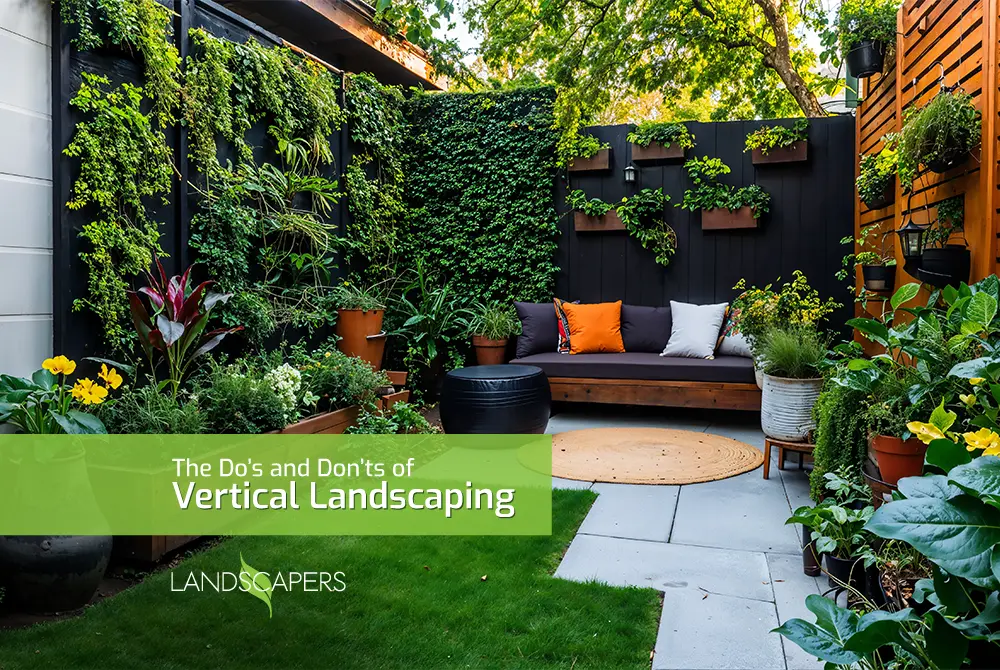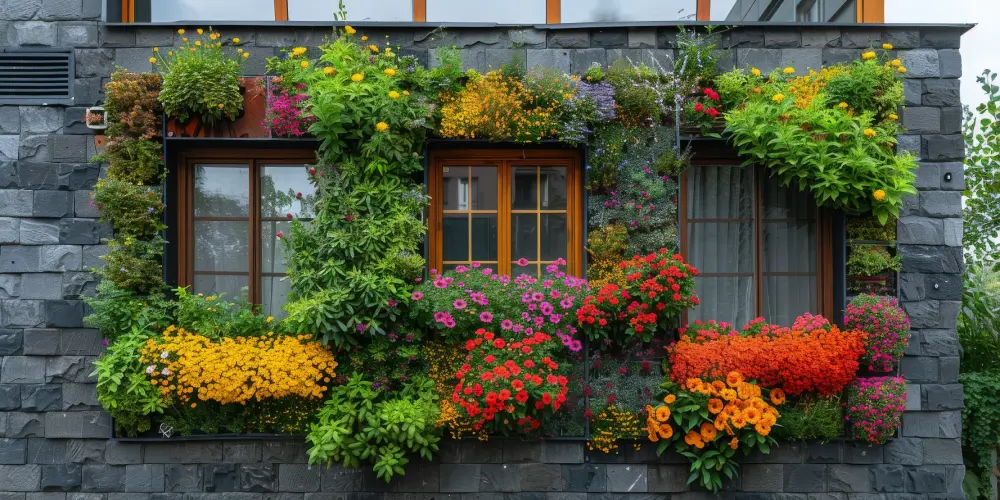
The Do’s and Don’ts of Vertical Landscaping
In a world where urban living is rapidly expanding and green spaces are shrinking, vertical landscaping has emerged as one of the most creative, practical, and aesthetic solutions for bringing nature back into our lives. From elegant balcony gardens to massive green walls in commercial buildings, vertical gardens are transforming the way we think about greenery. But while this innovative approach offers endless possibilities, its success depends on proper planning, the right techniques, and consistent care.
Whether you are a homeowner, interior enthusiast, or aspiring gardener searching for effective Vertical Landscaping Ideas, understanding the essential do’s and don’ts can save your garden from common pitfalls. Let’s explore how you can create a stunning vertical landscape that thrives year-round.
The Do’s of Vertical Landscaping

- Do Assess Your Space Carefully
Before you start designing your vertical garden, evaluate the available wall or structure. Check:
- How much sunlight the area receives
- The type of wall surface
- Nearby ventilation or obstructions
- Temperature and humidity levels
A proper assessment helps you select the right plants and prevents structural damage later on.
- Do Choose the Right Plants
Not all plants are ideal for vertical growth. Choose species that adapt well to confined spaces and varying moisture levels. Some great options include:
- Ferns
- Money plants
- Philodendrons
- Spider plants
- Succulents
- Herbs like basil, mint, or rosemary
Selecting climate-friendly and low-maintenance plants ensures lush growth throughout the year.
- Do Ensure Proper Irrigation
Vertical gardens often suffer from uneven watering. Install a drip irrigation system or automated watering line to maintain consistent moisture levels. Proper irrigation prevents root rot, nutrient deficiency, and water wastage.
- Do Use High-Quality Soil and Fertilizers
Since vertical gardens have limited soil volume, the quality of your potting mix matters. Use lightweight, nutrient-rich soil and add organic compost or slow-release fertilizers. This ensures your plants grow strong and healthy.
- Do Provide Strong Structural Support
From wooden frames and metal grids to modular planters and geotextile pockets, your garden structure must be durable and secure. This prevents accidents and supports plant weight as they mature.
- Do Consider Aesthetic Balance
Balance is key in vertical landscaping. Create a harmonious arrangement using a mix of textures, leaf sizes, and shades of green. Use contrasting plant colors and cascading varieties for a naturally layered look.
- Do Regular Maintenance
Vertical gardens require consistent care. Make sure to:
- Trim overgrown plants
- Remove dead leaves
- Check for pests
- Refill soil and nutrients
- Monitor irrigation lines
Scheduled maintenance ensures your vertical landscape remains vibrant and thriving.
The Don’ts of Vertical Landscaping

- Don’t Overcrowd Your Plants
One of the biggest mistakes in vertical landscaping is stuffing too many plants in a small area. Overcrowding leads to poor growth, moisture imbalance, and fungal infections. Give each plant enough room to expand naturally.
- Don’t Ignore Sunlight Requirements
Placing shade-loving plants in full sun or the reverse will weaken them quickly. Match your plant choices with the exact lighting conditions of your space to ensure long-term survival.
- Don’t Use Regular Garden Soil
Garden soil is heavy and may retain too much water, causing drainage issues. Instead, use a specially formulated potting mix created for vertical gardens to avoid compaction and poor aeration.
- Don’t Let Water Accumulate
Water pooling at the bottom of planters or on wall surfaces can cause structural damage, root rot, and mold. Ensure your system has proper drainage channels and avoid overwatering.
- Don’t Neglect Pest Control
Vertical gardens can attract pests like aphids, mites, or whiteflies if ignored. Regular inspections and organic pest control measures help protect your greenery and extend its lifespan.
- Don’t Limit Yourself to Indoor Spaces Only
Vertical landscaping is not just for interiors. Outdoor walls, balconies, boundary walls, and patios offer great opportunities for lush vertical designs. Explore various Vertical Landscaping Ideas to maximize your green space indoors and outdoors.
- Don’t Forget the Long-Term Costs
Vertical landscaping is beautiful, but it does require investment in systems like irrigation, supportive structures, and regular maintenance. Plan your budget accordingly to avoid unexpected expenses later.
Creative Vertical Landscaping Ideas to Inspire You
If you’re ready to create your own vertical oasis, here are some inspiring ideas:
- Modular Green Wall Panels
Perfect for modern homes and offices, these panels allow you to mix-and-match plants easily and create your own living artwork.
- Hanging Pot Arrangements
A simple yet stylish method – hang small pots or planters at varying heights for a cascading, visually appealing green wall.
- Wooden Pallet Gardens
A cost-effective and eco-friendly DIY option that works beautifully on balconies or patios.
- Herb Walls in the Kitchen
Grow your everyday herbs vertically in the kitchen for both convenience and natural décor.
- Succulent Frames
Low-maintenance and compact, succulent frames add a refreshing burst of greenery to indoor spaces.
- Fence or Boundary Wall Gardens
Use climbing plants or mounted planters along fences to add privacy and beauty.
Final Thoughts
Vertical landscaping is a wonderful way to reconnect with nature, enhance your living space, and elevate your home or office aesthetics. By following the essential do’s and avoiding the common mistakes, you can create a sustainable, low-maintenance, and visually stunning green wall.
With the right Vertical Landscaping Ideas, your vertical garden can become a standout feature that brings freshness, tranquility, and beauty to your everyday environment.

